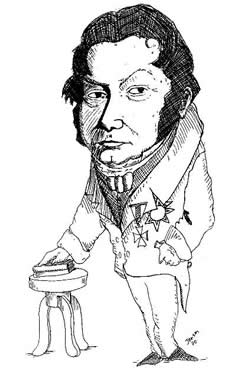
"Fond Dictator"
August 1 , 2007
Jöns Jacob Berzelius (1779-1848). Swedish chemist. Originally trained as a physician, Berzelius was largely self-taught as a chemist and spent most of his adult life as a professor at the Karolinska Institute in Stockholm. A superb analytical chemist, he is credited with the discovery of the elements selenium (1817) and thorium (1828) and with having almost single-handedly generated the first comprehensive table of accurate atomic weights (though many of his values are now known, for theoretical reasons, to be either multiples or fractions of our current values). He is perhaps best known for his electrochemical or dualistic theory of chemical combination, which dominated chemical theory during much of the first half of the 19th century, and for his introduction of our current chemical symbolism based on the use of letter abbreviations for each atom type and numerical subscripts to represent their combining ratios. He was also the author of an influential multivolume textbook, monographs on blowpipe analysis and the chemical classification of minerals, and of an annual review of chemical research (the Jahres-Bericht) which he published yearly between 1822-1848. Through this latter medium he was able to "dictate" much that happened in European chemistry and to coin much of our present-day chemical vocabulary, including such terms as halogen, isomer, polymer, catalyst, and protein.
Courtesy of Professor William Jensen, Oesper Chair of the History of Chemistry and Chemical Education, University of Cincinnati
> Past Notable Chemists